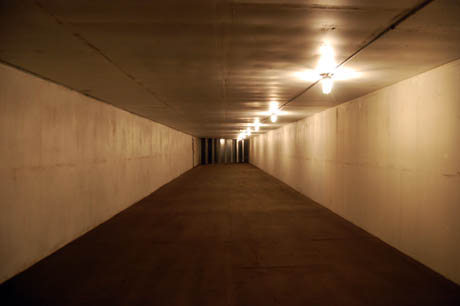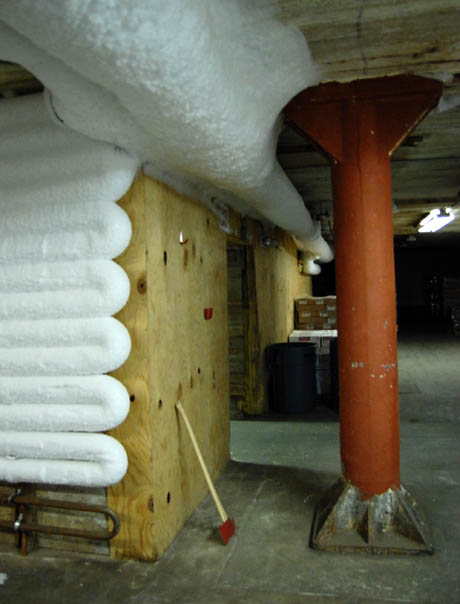
IMAGE: LA Cold Storage, photograph by Nicola Twilley.
As dedicated Edible Geography readers will know, for the past couple of years I have been a part-time explorer of the artificial cryosphere — the enormous coldscape of refrigerated warehouses, tank farms, banana-ripening rooms, reefer trucks, and home appliances that are tied together across America in a (relatively) seamless network of thermal control.
Along the way, I have taught a seminar on spaces of artificial refrigeration at Columbia University’s GSAPP, conducted interviews with refrigeration pioneers, and had the chance to visit some of the coldscape’s unsung monuments.
My research is far from over: over the next couple of months, Matthew Coolidge of the Center for Land Use Interpretation and I will be crisscrossing the continent to conduct more site visits for a Graham Foundation-supported exhibition on the topic, to open at CLUI’s Culver City headquarters in April. And, meanwhile, I am putting the final touches to a book proposal that I solemnly promise will not be subtitled “How Refrigeration Changed the World” — although it did!
However, for those of you who would like to anticipate real winter (just a couple of days away, if you’re in the northern hemisphere) with a quick guide to noteworthy typologies of the artificial variety, I am delighted to say that I have short piece in the latest issue of Cabinet magazine. It’s a whirlwind tour of a handful of my favourite refrigeration stories and sites, from Kraft’s gargantuan subterranean cheese cave in Missouri (photographed by the talented and generous Christoph Morlinghaus) to the Maersk executive who spent her twenties living in a refrigerated container.

IMAGE: Old ammonia coils at LA Cold Storage, photograph by Nicola Twilley.
It was a lot of fun to write, and I’m very grateful to editor-in-chief Sina Najafi for the commission, and to Keller Easterling for suggesting that my refrigerated adventures might fit the issue’s Logistics theme — her own contribution, on horizontal movement and the floor in the logistics landscape, is not to be missed.
Cabinet, for those of you who don’t know it, is a quarterly treasure trove, introducing the curious to the man behind the FBI’s database of shoe soles or the thorny question of which foodstuffs should be included in a painting of Christ’s last supper.
The current issue is no exception, with highlights including Clare Lyster’s look inside the black box of Amazon’s robotic picking systems, Michael Osman’s introduction to the thermophone, an instrument for making temperature audible, and Joshua Bauchner’s interview with Nancy Pope on the intricacies and evolution of the U.S. Postal Service, and its Achilles Heel, the red envelope:
Red envelopes carry a small amount of phosphor that is similar to that of stamps, so red envelopes can confuse the facing-canceling machines and are kicked out to be faced by hand. This was more of a problem in the past […] but Christmas and Valentine’s day still pose a challenge to postal workers.
Pick up a copy and/or subscribe today, and stay tuned for details of the CLUI exhibition and (fingers crossed, please) book!

